Latest questions:
Trending questions:
Hot questions:
Blockchain
4 answers
You heard SAP APO (Advanced Planner and Optimiser)
I have posted about this on Linkedin and happy to share here:
Over the last few months I have been researching, the very exciting world of Blockchain and learning about this technology. I believe that Blockchain can lead to an entirely new eco-system of commerce and transacting across the world, and across all industries.
I am looking at blockchain through the eyes of a retailer, and looking at how this new world can shape the future business model for retailing.
The basic premise of Blockchain:
- A decentralised, open ledger of information (open to participants allowed access)
- Data is held on many distributed ledgers around the world
- All ledgers hold the same information for the data in question
- Any changes to this data can be tracked
- All ledgers carry the same copy of this data
- Blockchain leads to transparency and trust across the network
Let us assume we are starting with a new way to operate a retail business which we have no previous business or systems in place. We will call the business “Antony Stores” or AS for ease of understanding
AS is going to sell luxury, branded clothing via its physical stores, website, mobile site and through social media across the whole of Europe.
Retail use case one: The supply chain ledger
Lets explore a luxury product journey on blockchain and we will start with the Product which will be a jumper.
We will call this Blockchain "AS Blockchain" and all of our data will be shared on this decentralized ledger.
We need a system to track and source all our products, and our customers want to know where the raw materials came from and where the products were made. For this we need a database of product information.
If we host this database, and hold all this data, all the suppliers in the chain would need to send us data to enter into the database, via many different interfaces.
Lets look at a blockchain solution: We create a new "AS blockchain" ledger for all our product information:
· All our suppliers have access to the "AS blockchain"
· We use a standard naming convention across the "AS blockchain"
· Access is restricted to the participants in the "AS blockchain"
· Ledgers are held at supplier, partners and internally – all on "AS blockchain"
How would this work for AS:
The wool supplier will tag their wool on "AS blockchain" ledger, with the country and farm of origin
The factory where the wool was spun would enter the details of the spinning process (dates, times, locations etc)
The jumper is then made in a different country and the item is entered into the ledger with the country and factory where the jumper was made and finished.
Once the product arrives into our warehouse, we already know all the details (from the blockchain ledger), and we check the product quality and enter into the system that we are happy with the item.
Payment to the supplier is made immediately (as they are part of our blockchain) and the item is shipped to our Milan store.
The next day a customer in store asks where the product was made, and our store staff are able to tell the customer, the entire details of the product and confirm this is a genuine product.
The customer buys the item and we record the purchase
This is an entirely new way of looking at commerce and a very simplified version of the blockchain potential.
As a retailer we will know the following information at all times:
1) What stage the product is, in the production cycle
2) The location of the product or components
3) The steps that have been taken on its journey
4) The confirmation of its quality
We could also add in the costs and time elements for each stage, opening up a great world of insight form this information - this information would help a retailer assess how long the products take to make allowing deep insight into costs and efficiency
The key to this system is the decentralised ledger, which reduces the systems issues and interfaces. In the traditional model, you would have separate providers of information sending data via API's or EDI, which takes time and is prone to errors.
Blockchain helps improve process efficiency by anything from 40% to 60% and has given significantly more information to the retailer and the customer
As product designer I believe that blockchain will bring positive changes in the design process and product - service "story-telling". There is a before and after with blockchain regarding several fields like sustainability, ethics, labour, fair trade, and is just the beginning of this technology. It will dramatically increase as Antony Welfare mentioned efficiency, costs and processes. Besides it will bring clarity to the fields of sustainable design, ethical design and social impact design, because any information, data now can be tracked and confirmed. It totally changes the design process if at the very beginning (client brief and concepts) the designer projects sustainable, ethical product and services already knowing and understanding the blockchain mechanics and how to insert in the whole design chain (from concepts to reverse logistics). It is clear that the impact will be in the field of product design, industrial design and services design more than graphic design or digital design. Best!
Block chain is the Technology in the New Internet allowing digital information to be distributed but not copied, created the backbone of a new type of internet. Originally devised for the digital currency, Bit coin that tech community has now found other potential uses for the technology, by the block chain technology properties are made so unique.






